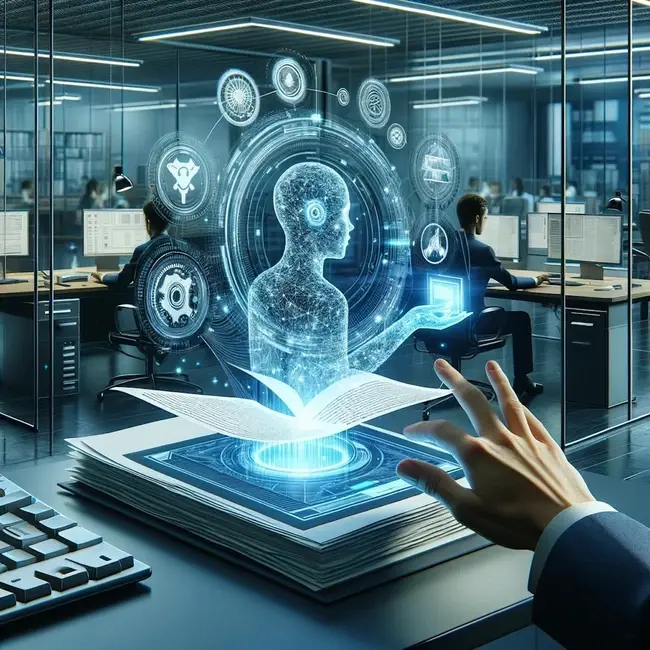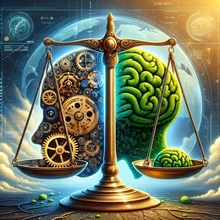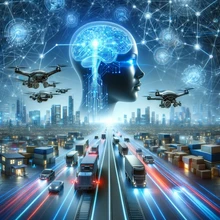
AI-powered Optical Character Recognition (OCR) is an advanced form of traditional OCR technology, which is designed to convert different types of documents, such as scanned paper documents, PDF files or images captured by a digital camera, into editable and searchable data. What sets AI-powered OCR apart from traditional OCR is its use of artificial intelligence, machine learning, and deep learning algorithms to improve the accuracy and efficiency of text recognition, even in cases where the document quality is poor or the text is displayed in complex layouts.
AI-powered OCR can recognize text and characters from images and documents more accurately than traditional OCR because it can learn from the data it processes. This learning capability allows it to understand and adapt to various fonts, styles, and layouts, as well as to correct errors automatically. It can also handle handwritten text and recognize text in multiple languages, making it much more versatile.
Uses of AI-powered OCR include:
Document Digitization: Converting paper documents into digital formats for easy storage, search, and retrieval.
Automated Data Entry: Extracting information from documents, such as invoices, receipts, and forms, for automatic entry into databases, reducing manual data entry errors and labor costs.
Accessibility: Assisting visually impaired individuals by converting written text into speech or braille.
Content Moderation: Scanning user-generated content, such as comments or posts in images, for inappropriate or sensitive information.
Legal and Healthcare Documentation: Quickly sorting through large volumes of documents to identify relevant information for cases or patient records.
Educational Resources: Converting textbooks and other educational materials into digital formats, making them more accessible and interactive.
Banking and Finance: Processing cheques, forms, and other documents automatically for faster transaction processing.
Automated Data Entry
Automated data entry using AI-powered OCR (Optical Character Recognition) is a process that involves extracting data from scanned documents or images and converting it into editable and searchable digital text. This technology streamlines the data entry process, reduces manual errors, and improves efficiency in various business operations. Here's a comprehensive explanation of the technology, process, and business benefits:
Technology Needed:
OCR Software: AI-powered OCR software is the core technology that recognizes and extracts text from scanned documents or images. Some popular OCR software include ABBYY FineReader, Tesseract, and Google Cloud Vision API.
Scanner or Digital Camera: A high-quality scanner or digital camera is required to capture the physical documents or images that need to be processed.
Computing Infrastructure: A computer or server with sufficient processing power and memory is necessary to run the OCR software and store the extracted data.
Data Storage: A database or cloud storage system is needed to store and manage the extracted data for further processing and analysis.
Process:
Document Scanning: The physical documents are scanned using a scanner or captured using a digital camera, converting them into digital images.
Image Preprocessing: The scanned images undergo preprocessing to enhance their quality, remove any noise, and adjust the contrast and brightness for better text recognition.
Text Recognition: The AI-powered OCR software analyzes the preprocessed images and recognizes the text, converting it into machine-readable format. Advanced OCR systems can handle various fonts, styles, and languages.
Data Extraction: The recognized text is extracted and organized into a structured format, such as CSV, JSON, or XML, based on predefined templates or rules.
Data Validation and Correction: The extracted data is validated and checked for errors or inconsistencies. Some OCR systems employ machine learning algorithms to improve accuracy and correct common mistakes.
Data Storage and Integration: The validated data is stored in a database or integrated with other business systems, such as ERP or CRM, for further processing and analysis.
Business Benefits:
Increased Efficiency: Automated data entry using AI-powered OCR significantly reduces the time and effort required for manual data entry, allowing employees to focus on higher-value tasks.
Cost Reduction: By automating the data entry process, businesses can reduce labor costs associated with manual data entry and minimize the need for additional hardware and storage space.
Improved Accuracy: AI-powered OCR minimizes human errors that often occur during manual data entry, ensuring higher data accuracy and consistency.
Faster Processing: OCR technology enables rapid processing of large volumes of documents, accelerating data-driven decision-making and improving overall operational efficiency.
Enhanced Data Accessibility: The extracted data is stored in a digital format, making it easily searchable, retrievable, and shareable across different departments and systems.
Scalability: Automated data entry using OCR can be scaled up or down based on the volume of documents, allowing businesses to handle fluctuating workloads efficiently.
Compliance and Audit Trail: OCR technology helps maintain a digital audit trail of the extracted data, ensuring compliance with legal and regulatory requirements.
By leveraging AI-powered OCR for automated data entry, businesses can streamline their data management processes, reduce costs, improve accuracy, and gain a competitive edge in today's data-driven world.
Industry Use Cases
Automated data entry using AI-powered OCR has a wide range of applications across various industry verticals. Here are some of the key use cases by industry:
Healthcare:
Medical record digitization: OCR helps digitize patient records, medical charts, and handwritten notes, making them easily accessible and searchable.
Insurance claim processing: OCR automates the extraction of data from insurance claim forms, reducing processing time and errors.
Prescription management: OCR enables the digitization of handwritten prescriptions, improving accuracy and efficiency in medication management.
Banking and Finance:
Invoice processing: OCR automates the extraction of data from invoices, streamlining accounts payable processes and reducing manual effort.
Know Your Customer (KYC) compliance: OCR helps extract data from identity documents, such as passports and driver's licenses, for faster customer onboarding and verification.
Loan application processing: OCR enables the automated extraction of data from loan application forms, reducing processing time and improving accuracy.
Legal:
Contract management: OCR helps digitize legal contracts, making them searchable and easier to manage and analyze.
Document discovery: OCR enables the automated extraction of relevant information from large volumes of legal documents during litigation or due diligence processes.
Intellectual property management: OCR assists in digitizing and organizing patent and trademark documents, facilitating easier search and analysis.
Retail and E-commerce:
Invoice and purchase order processing: OCR automates the extraction of data from invoices and purchase orders, streamlining supply chain management and accounts payable processes.
Product information management: OCR helps extract product details from catalogs, datasheets, and other sources, enabling efficient product data management.
Customer feedback analysis: OCR enables the extraction of text from customer feedback forms and surveys, facilitating sentiment analysis and insights.
Government and Public Sector:
Citizen service delivery: OCR helps digitize forms and applications, enabling faster processing and improved citizen services.
Records management: OCR assists in digitizing and indexing large volumes of government records, making them easily searchable and accessible.
Tax processing: OCR automates the extraction of data from tax forms and returns, reducing processing time and errors.
Education:
Exam and assessment grading: OCR enables the automated grading of multiple-choice and fill-in-the-blank tests, saving time and effort for educators.
Student record management: OCR helps digitize student records, transcripts, and other educational documents, facilitating efficient record-keeping and data management.
Research data extraction: OCR assists in extracting data from research papers, journals, and publications, enabling easier analysis and knowledge discovery.
Manufacturing and Logistics:
Bill of lading processing: OCR automates the extraction of data from bills of lading, streamlining shipping and logistics processes.
Quality control documentation: OCR helps digitize quality control reports, inspection records, and other manufacturing documents, enabling better data management and analysis.
Inventory management: OCR assists in digitizing inventory records, purchase orders, and delivery notes, facilitating accurate and efficient inventory tracking.
These are just a few examples of how automated data entry using AI-powered OCR can be applied across different industries. The technology's versatility and ability to extract data from various types of documents make it a valuable tool for streamlining processes, reducing manual effort, and improving data accuracy in numerous business contexts.
The integration of AI into OCR technology not only improves the accuracy and efficiency of text recognition but also opens up new possibilities for automating complex document processing tasks across various industries.












